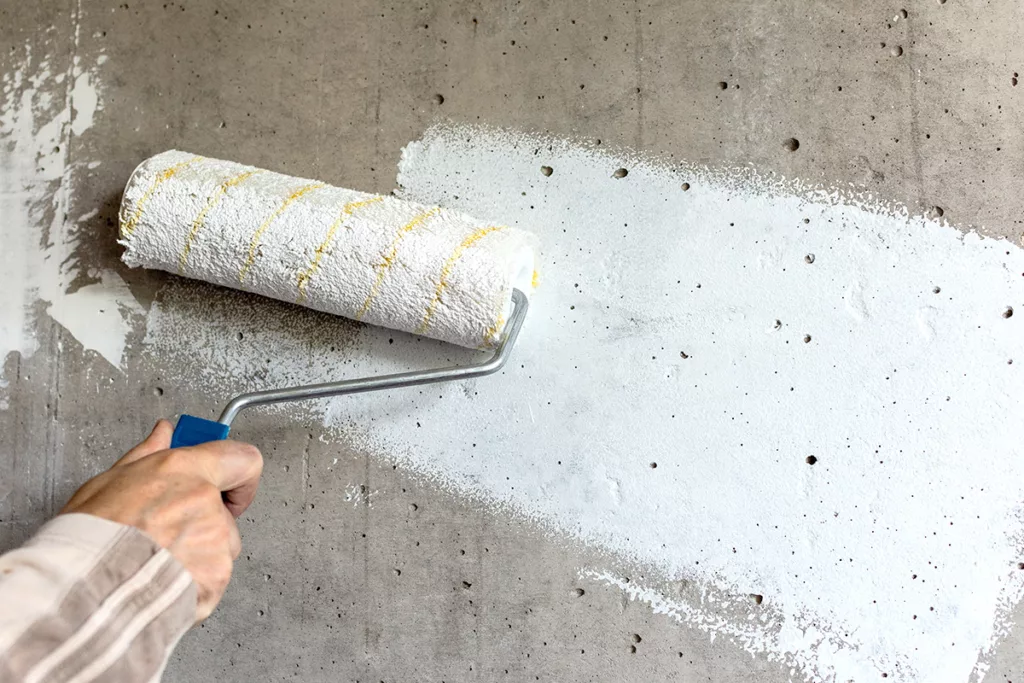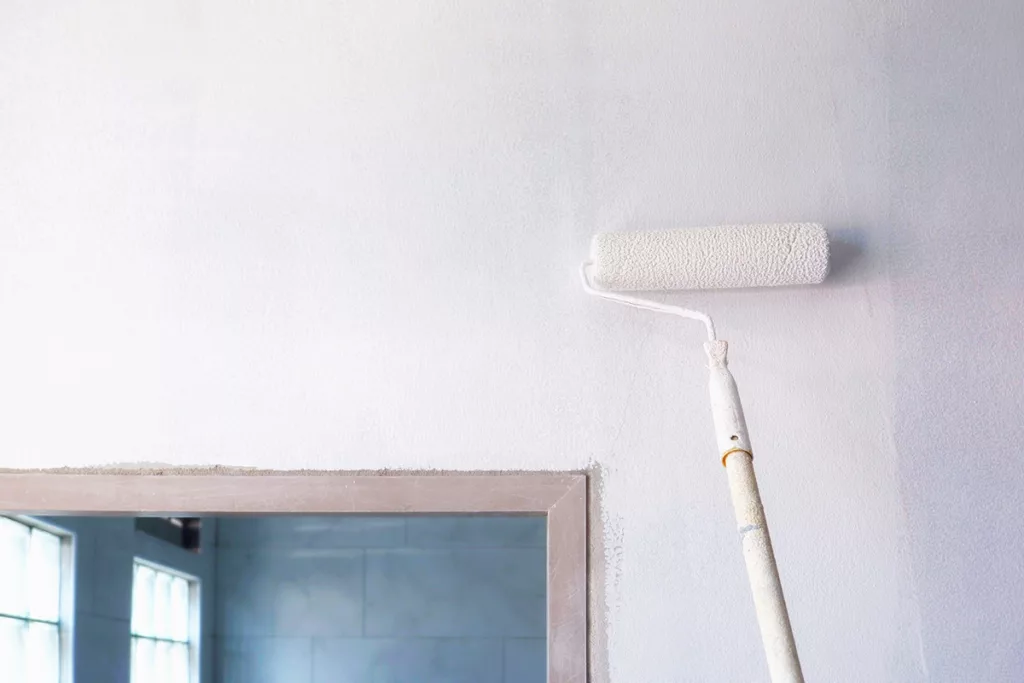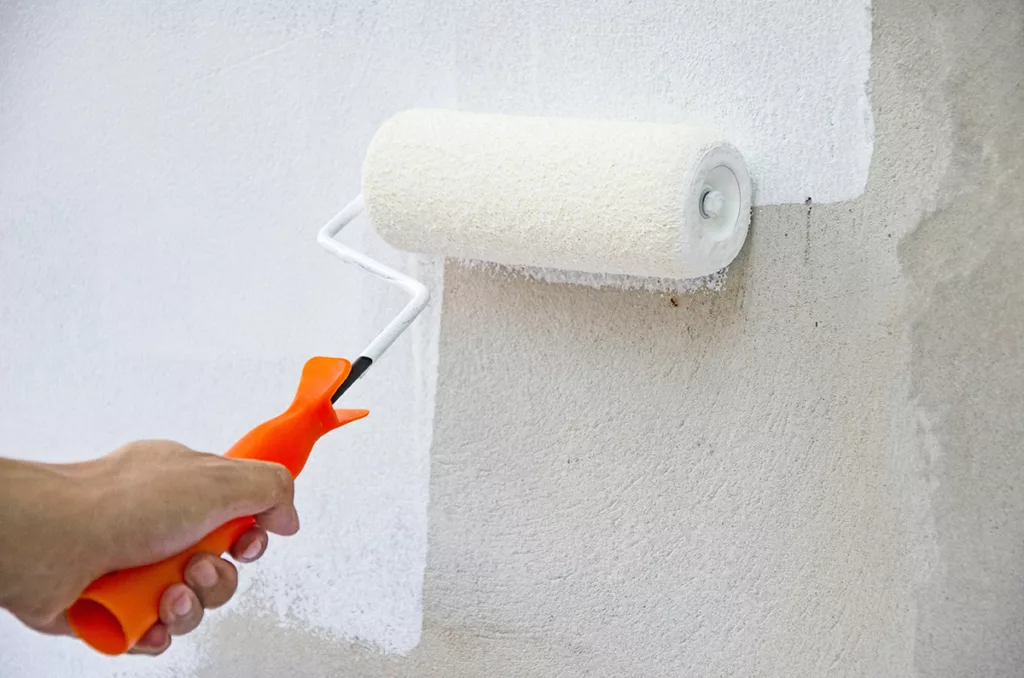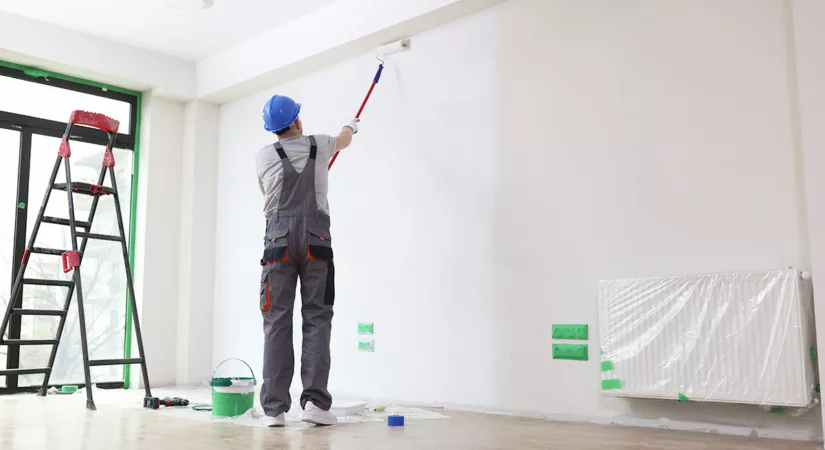Every long-lasting coat of paint relies on two essential factors: the sealer and the primer. These vital components ensure that your home’s paint adheres correctly and will remain in good condition for years to come. In this guide, we explain the differences between paint sealer vs paint primer, and how they benefit residential painting projects.
What is the Difference Between Paint Primer and Paint Sealer?

Paint primer and paint sealer are both used to prep surfaces for painting, but they serve different purposes:
- Paint Primer: Before painting begins, a primer is used to create a smooth surface for the paint to be applied. It can also help cover stains and bleed-through from underlying materials. This helps provide better adhesion and a uniform coat of paint and color.
- Paint Sealer: Sealer is also applied before painting begins but is typically used on porous surfaces such as brick or concrete, to prevent paint from being absorbed. It can also be used on previously painted surfaces to create a barrier between incompatible paints.
In general, you’ll use a primer on new surfaces before applying paint. Sealers can be used on new or previously painted surfaces and porous materials. In some cases, residential painters will use both a primer and a sealer. For example, when painting a brick house, applying a sealer first can help prevent the primer from being absorbed into the surface. Then, the primer is applied to create a good base for the new paint.
Benefits of Paint Primer for Residential Painting Projects
Paint primer offers several advantages that contribute to a long-lasting, beautiful paint job for a home. Its main purpose is to create a smooth, uniform surface the paint can adhere to, while also protecting the underlying material. Primer helps improve the longevity and durability of a residential paint job by providing a strong bond between the surface of the house and the paint.
This will extend the life of the finished paint job by preventing peeling and blistering, blocking stains, and protecting against moisture damage. These benefits all contribute to a more appealing finish that stays appealing for a long time.
Types of Paint Primers and When to Use Them

Preparing a home with primer is a crucial step in the painting process. There are two main categories of paint primers, differentiated by their base:
- Oil-Based Primers: These traditional primers offer excellent adhesion, even on glossy or slick surfaces, and provide superior stain-blocking capabilities. They are particularly well-suited for surfaces prone to rust or water damage. However, oil-based primers have a strong odor, higher VOC (volatile organic compound) content, and require longer drying times.
- Water-Based (Latex) Primers: These primers are becoming increasingly popular due to their ease of use, water cleanup, and lower VOC content. They dry faster than oil-based primers and offer good adhesion and stain-blocking properties. However, they might not be the best choice for heavily stained surfaces or those with constant moisture exposure.
There are also specialty primers useful in specific environments and situations. Bonding primers, for example, are formulated to adhere to difficult surfaces like vinyl siding, or PVC. Mold and mildew-resistant primers are great to use in areas prone to moisture or humidity, to help prevent growth beneath the paint surface.
Benefits of Paint Sealer for Residential Painting Projects

Paint sealer is used on porous surfaces like wood, concrete, or drywall to help reduce paint absorption. Sealers are formulated to make a porous surface less porous, preventing the new paint or primer from soaking in too quickly. This can ensure a much more even paint application and reduce the amount of paint needed for a perfect final result.
Sealers can also help cover stains or surface imperfections and prevent them from being visible through the new paint. This is useful on surfaces with water damage, smoke stains, or layers of stubborn paint colors.
When to Use a Paint Sealer

Paint sealers are a handy tool for preparing various surfaces before painting. Here are some specific situations where using a paint sealer is recommended:
- Different Paint Finishes: Paint sealers can create a barrier between incompatible paint finishes, allowing you to apply a different type of paint on top. For example, you can use a sealer before applying latex paint over oil paint.
- Masonry Surfaces: Unglazed brick, cinder block, and concrete are all porous materials. A sealer helps prevent paint or primer from excessively soaking in and allows for better coverage.
- Open-Grained Woods: Bare woods like oak and maple have a naturally porous structure. A sealer fills these pores, preventing excessive paint absorption and ensuring a more even finish.
- Colorful Wood Grains: Some woods, like redwood, can bleed through or discolor paint. Sealers prevent these natural oils and resins from migrating and affecting the final paint color.
- Patched and Repaired Surfaces: Large areas of joint compound or patching plaster can be unevenly absorbent. Sealers create a uniform surface for consistent paint application.
Contact Timmins for Expert Residential Painting Services in Sonoma County
At Timmins Painting, we understand the residential painting process through and through. If you require residential painting services in Sonoma County, contact us today for a free painting estimate, or give us a call at (707)-792-0773 to learn more!

